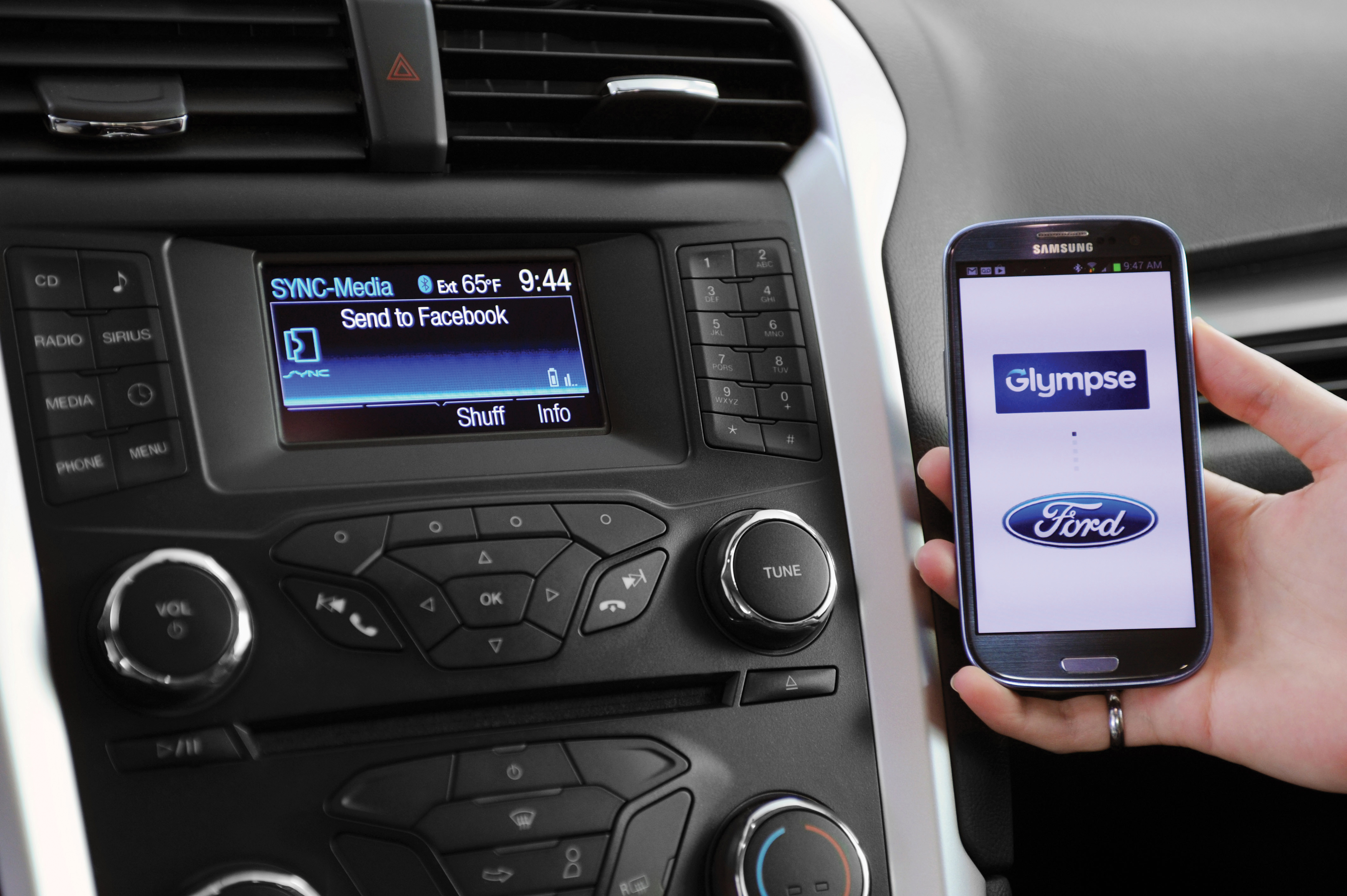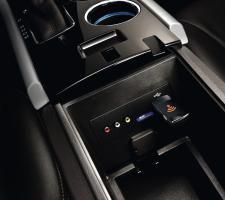
Ford strategy is to leverage existing devices and network subscriptions, rather than embed internet connectivity in the car
Internet-connected cars are poised to flood the market in the near future. Pete Goldin considers the functionality they offer, the technology they use and the challenge they represent in terms of driver safety.
Many vehicles on the road today offer some sort of internet connectivity and experts agree that this capability will become a competitive differentiator in the automotive industry in the next few years. The era of the digital vehicle, it seems, has started.“We clearly see that cars in the near future will integrate the same level of digital services that consumers today are used to having in their homes or at work,” says Lex Kerssemakers, senior vice president, product strategy and vehicle line management at
In
“
You might think internet connectivity just means web surfing while in the car, with something that looks similar to a PC or laptop embedded in the dashboard. The reality is that there are a variety of uses, however, and most current internet applications in vehicles do not involve the impractical practice of the driver browsing the web.
True connectivity
“True connectivity means so much more than creating the latest interactive dashboard feature: it’s about placing the consumer – not the car – at the centre of the digital equation,” says Joel Kremke, senior vice president of cloud providerThere are many uses for internet connectivity in vehicles, but the most popular is providing the driver with content. Koslowski points out that content must be targeted to the driver’s needs, however, rather than simply opening up access to anything that can be found on the internet via a PC or smartphone.
“
“The automotive industry does not understand this yet,” he continues. “There are still quite a number of companies out there trying to introduce one app after another, instead of really thinking about what matters to people when they are operating a vehicle. If you try to replicate a PC on wheels, that is when you lose consumers, because the car is not the ideal platform for that.”
Ultimately, the internet will have to accomplish two main goals, says Koslowski – enhance the driving experience and enhance the automobile ownership experience.
From the perspective of the driving experience, traveller information such as navigation, weather, traffic, gas prices and parking information make practical sense. Infotainment, such as news, sports scores and streaming music, and messaging such as email,
An example is the new Sensus Connected Touch system, a connectivity solution that will be available in Volvo cars from May.
Current functionality includes streaming music via Spotify and Deezer; web radio with TuneIn and Orange Live Radio; Connected Navigation with traffic information;
On the other hand, the ownership experience involves the vehicle communicating information, such as repair or maintenance needs, to the driver.
“A good example would be my vehicle Tweeting me when it needs an oil change. That requires the vehicle to be connected to my social ecosystem,” says Dave Miller, chief security officer at Covisint.
Using Volvo as an example again, the Volvo On Call system offers smartphone apps for iOS, Android and Windows phones. Customers can use these apps to check car status, petrol level, average fuel consumption, mileage, warning messages, alarm and door lock status, and location of the car shown on a Google map.
Connection choices
There are two basic ways a car can get connected. One way is via embedded technology, similar to a mobile device, that connects directly to the internet. “Think of the vehicle as basically another device in a user’s life – basically a cell phone that goes really fast and has an engine,” says Miller. “Vehicles are moving towards being movable endpoints,” he continues. “They can have their own TCP/ IP address. They can be directly addressed.”Premium automotive brands such as
The smartphone is the second option for vehicle connectivity. Vehicles can be tethered directly to the smartphone via USB, or simply use the smartphone as a wireless hotspot.
“For smartphone apps, we have a feature called AppLink which allows drivers to interface and control apps through our SYNC voice recognition system,” says Alan Hall, communications manager, technology, research and innovation at
“Using a built-in Wi-Fi chip, a customer can bring in a 3G/4G connection by plugging in a USB modem or by Bluetooth-tethering with a smartphone, and create a Wi-Fi hotspot inside the car,” adds Hall. “Passengers can then connect multiple devices and use them during a trip.
“We do not offer an embedded cellular connection like some of our competitors, because our strategy is to leverage existing devices and network subscriptions that you already own and pay for,” he says.
“The carriers play a very big role here,” notes Koslowski. “Some of these carriers are quite interested in being more than just the ‘pipe’, and also provide application services and intelligence. The manufacturers will have to figure out how to be more involved as
“The driver still has to operate the car. So the question in the automobile should be: should there NOT be an app for that?”
well, and do certain things in-house. This is currently the state of the industry, where the mindset is trying to figure out who does what, who provides what aspect of the connected vehicle ecosystem.”
Interface challenge
One of the most important aspects of vehicle internet connectivity is the interface, of course.“A lot of these in-vehicle connectivity systems today are not all that great from the user experience point of view,” Koslowski admits. “Most consumers would agree that using a smartphone while driving is not a great user experience either. So I think the consumers are ready to see something new.
“The opportunity lies for the automotive industry – with regard to the process of consuming and requesting information in the vehicle – to really shine here and do something innovative that would go beyond what the smartphone does. The human machine interface (HMI) is where the industry needs to do a better job.”
Today, auto manufacturers offer touch screens or pads, rotary control knobs, and voice activated controls. Koslowski hopes automakers will go way beyond these, exploring areas as futuristic as gesture recognition and mood detection. Another important interface issue, of course, is that of possible driver distraction.
“I have a strong concern about internet use while driving,” John Maddox, director of collaborative strategies for UMTRI/TTI, agrees. “Internet browsing is a very visually intensive task. I just do not see how that is compatible with the task of driving.”
“I actually see driver distraction as a motivation, not a threat,” Koslowski counters, “because it really emphasises how the automotive industry needs to innovate in this area.”
Koslowski also points out that the interface is where vehicle manufacturers will really be able to differentiate themselves.
“You will not necessarily be able to differentiate on the content side,” he explains. “The remaining opportunity is how we are able to consume, create and share this content. That is where I think the thrust in the organisation can come from, finding a way to differentiate and ultimately charge for it.
“This is a great revenue opportunity for the automotive industry,” he concludes. “I think the industry has yet to truly embrace this idea and not just copy what people do when they take their phones into the car.”












